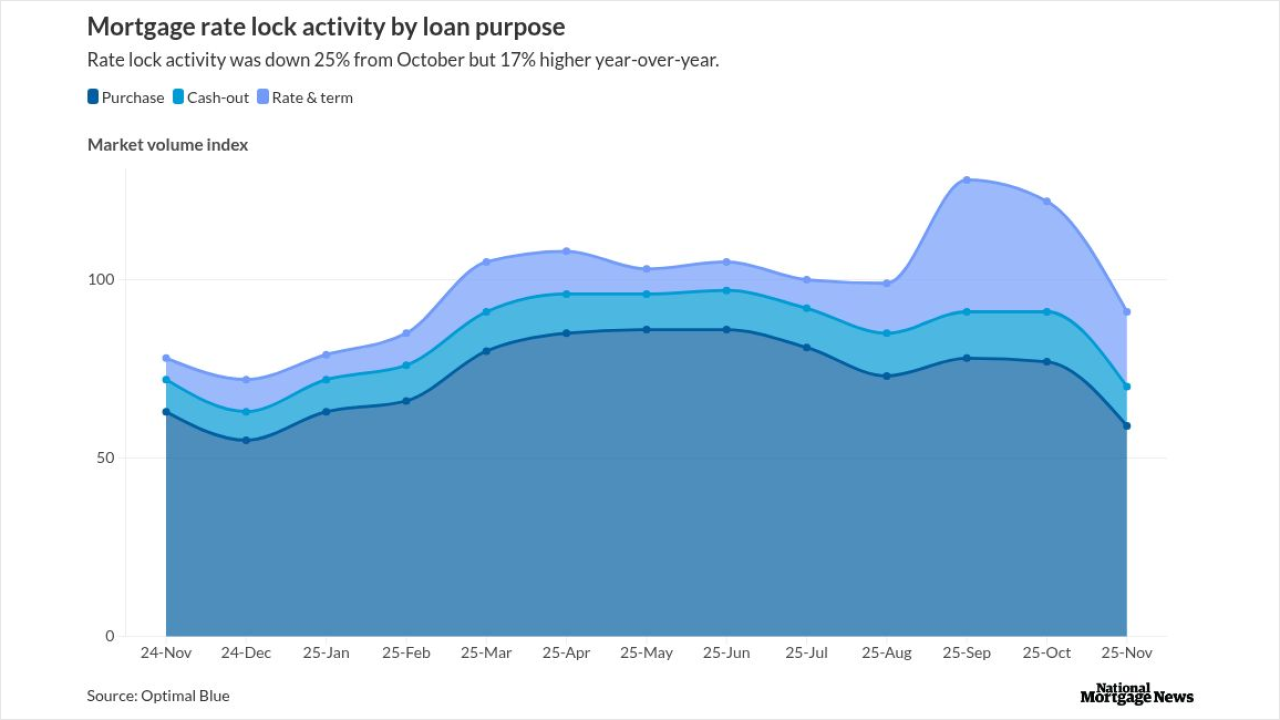
The Small Business Administration is inching toward a long-held goal — lenders originating more small loans through its flagship 7(a) program.
For fiscal year 2023, the average loan size was $479,685, down almost $60,000 from the prior fiscal year, according to SBA data. The agency's fiscal year ends on Sept. 30.
This trend is holding true for its fiscal year 2024 so far. Through Nov. 11, the average size of 7(a) loans is $419,636, down 13% from 2023. The drop is tied to a sizable increase in loans of $50,000 or less.
Throughout her 20-month tenure, SBA Administrator Isabel Guzman has worked to encourage the origination of more smaller loans. In 2021, Guzman proposed
A second proposal, to eliminate a longstanding cap on the number of nondepository small-business lending companies permitted to participate in 7(a), was more successful. SBA
In a Nov. 1 press release announcing the three new licenses, Guzman linked the new policy to her push for more small loans. "Persistent barriers to capital, especially small-dollar loans, still pose a challenge to many of the entrepreneurs who power our economy," Guzman said.
Small-business banking is incredibly important to financial services firms. Critical issues affecting this area are being discussed during American Banker's Small Biz Banking 2023 conference, which is being held in Nashville this week.
Given that the new SBLCs just received their licenses, their impact on the program has yet to be seen. Because of that, it's been the existing bank and credit union lenders that have done the lion's share of work driving down the average loan size.
SBA is reporting notable drops in average loan sizes for several high-volume 7(a) lenders. At the $374 billion-asset TD Bank average loan size has fallen 7.4% so far in fiscal 2024, to $117,694. The Cherry Hill, New Jersey, company was the No. 8 SBA 7(a) lender last year in terms of the value of its approved loans.
Wells Fargo's decline has been even steeper: 22%, to $155,012 as of Nov. 11. The megabank was the No. 10 lender last year based on loan value. At the $1.1 billion-asset BayFirst Financial in St. Petersburg, Florida — the No. 7 lender in 2023 — the average loan size has fallen 20%, to $146,298.
Perhaps no 7(a) lender has seen as big a drop as the $206 billion-asset M&T Bank, whose average 7(a) loan size has dropped 44% since the end of fiscal 2023, to $69,361. Christina Smaczniak, director of government programs, attributed the trend to M&T's everyday commitment to small-business clients, rather than strategic or policy changes. Overall, the Buffalo, New York, bank was the No. 20 SBA lender in 2023 based on approved loan value.
"It's primarily a result of our longstanding position as an SBA lender and learning how to do small-dollar lending at a high volume and doing so in a way that we can get small businesses access to capital quickly," Smaczniak said. "What really differentiates the experience is we are not looking for the transaction. This isn't just about a lending opportunity, it's about helping small businesses in the community. … No opportunity is too small to leverage an SBA guarantee."
M&T finances 7(a) deals as small as $10,000, according to Smaczniak.
While it's likely that M&T's average loan size will creep back toward historical levels, "we have identified some opportunities to help more smaller businesses, who require smaller loans, so we may be seeing more of this as we get through the rest of the fiscal year," Smaczniak said.
James Ballentine, founder and CEO of Ballentine Strategies in Washington, D.C., and a longtime lobbyist for the American Bankers Association prior to his 2022 retirement, credited Guzman for stressing small-dollar loans, as well as loans to African Americans, Hispanics and other disadvantaged groups, to a degree greater than any of her predecessors. Still banks, credit unions and other existing SBA lenders — while opposing rescission of the SBLC moratorium — have embraced SBA's overarching goal of making more small loans, Ballentine added. "It's been received by the lenders. There's been some focus there," he said.
Though the recently licensed SBLCs are in the early stages of setting up shop, at least one, Funding Circle, appears to be gearing up as a potential high-volume operator.

Funding Circle has announced a goal of becoming the No. 1 producer of 7(a) loans of $500,000 or less. The company expects to rely largely on partnerships with banks and credit unions to drive growth.
"To date, banks and credit unions have only purchased loans from Funding Circle. Now, they are able to embed our products … earning referral income," Ryan Metcalf, head of U.S. public affairs, wrote Monday in an email.




